Why Does The Oil Light Come On and Off When Driving?
The oil light is a crucial indicator that informs the driver about the oil condition of a vehicle. When you see it while driving, pull over immediately and address the underlying issue.
Why does it come on and off when driving? It can come on and off due to the following reasons:
- Low oil level
- Contaminated oil
- Worn-out circuits
- Engine parts failing
- A faulty pressure sensor
- Engine overheating
- Bad oil pump
- A clogged filter.
Turns out, we will cover all potential reasons that trigger the oil light in detail. We will also discuss how to diagnose them and what the solutions are for them. To get things clarified, read on.
Why Does the Oil Light Come On and Off When Driving?
The oil light comes on when a vehicle’s oil pressure is low. Without sufficient oil pressure, the engine will not be lubricated enough to run properly. As a result, the engine will be damaged.
There are two oil light indicators on the dashboard – yellow and red. A yellow oil light is a non-emergency sign that indicates an oil change. A red oil light indicates a much bigger problem related to low oil pressure in the system.
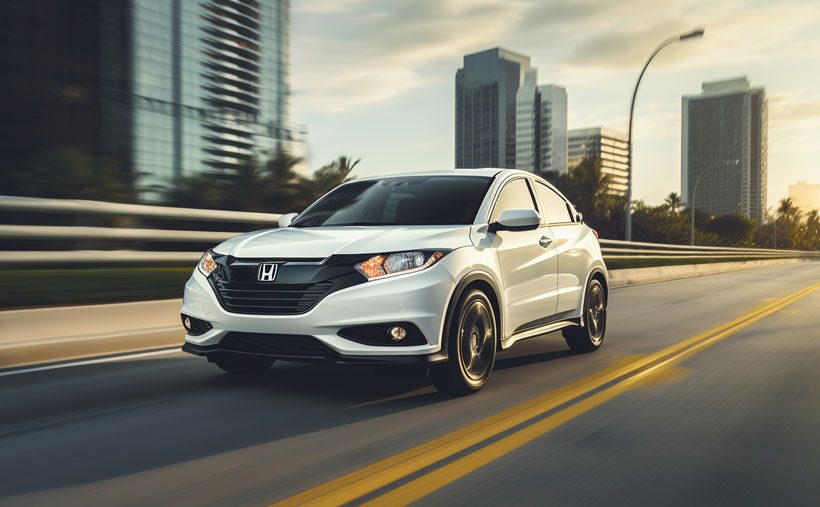
So, the low oil pressure light/the oil light comes on for the following reasons:
Insufficient Oil Level
While driving, the engine requires more oil to lubricate the metal components. When there is insufficient oil in the pan, the oil pump cannot distribute oil lubrication in the engine, which causes overheating. This triggers the oil light to come on.
Insufficient oil levels also arise from the following reasons:
- Worn-out oil seals and gaskets can leak oil, more so at high speeds or riding uphill. This causes low oil pressure as the engine does not receive adequate amounts of oil.
- When there is an oil leak, the oil pan loses oil much faster, and the oil pump cannot find enough oil to supply oil to the engine. This causes low oil pressure.
- The crankshaft and camshaft bearing of an engine may deform or swell over time. These worn-out bearings broaden the area where oil is supposed to flow through with force.
- Due to the gap created by the worn-out bearings, oil flows with less pressure and is insufficient to lubricate the engine parts, especially when driving.
- A clogged oil filter reduces oil circulation throughout the engine. When driving, the clogged filter is unable to let oil flow through to meet the increased demand. A clogged filter loses the functionality of cooling down the engine, causing the engine to overheat.
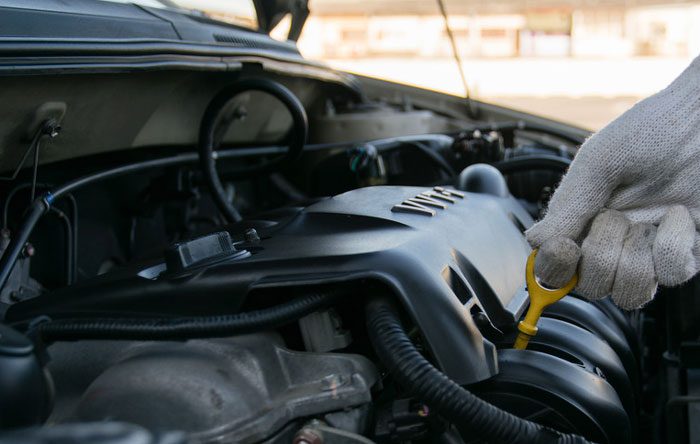
Diagnosis:
- Check if there is any oil dripping on the floor from oil leaks.
- Inspect if there are any broken or damaged seals, gaskets, or engine bearings in the oil system.
- Examine the oil level indicator by first pulling out the dipstick from the hood.
- Wipe it clean with a towel or clean cloth.
- Reinsert the dipstick back into the hood.
- Inspect the dipstick again to check oil levels.
- If the oil level is below the recommended range of the dipstick, then the vehicle has a low oil reserve.
Solution:
- Check if the seals and gaskets in the oil circuits are worn out from use. If so, replace them with new ones.
- If there are any oil leaks dripping on the floor, seal them properly with silicone sealant or oil seal additive.
- Replace the worn-out engine crankshaft and camshaft bearings with a set of new ones.
- Replace the clogged filter with a new one to restore proper oil circulation.
- Add and keep up to 4-6 quarts of oil, depending on the size and type of your vehicle.
Contaminated or Degraded Oil
Because of frequent heat generation, the oil becomes dirty over time. When you drive, the increased speed and vibration cause the dirty oil to travel much faster to the engine and bypass the oil filter.
This clogs the oil filter and reduces oil flow to the engine, triggering the oil light to come on.
It is recommended to change oil every 3-6 months or after covering 3000-5000 miles.
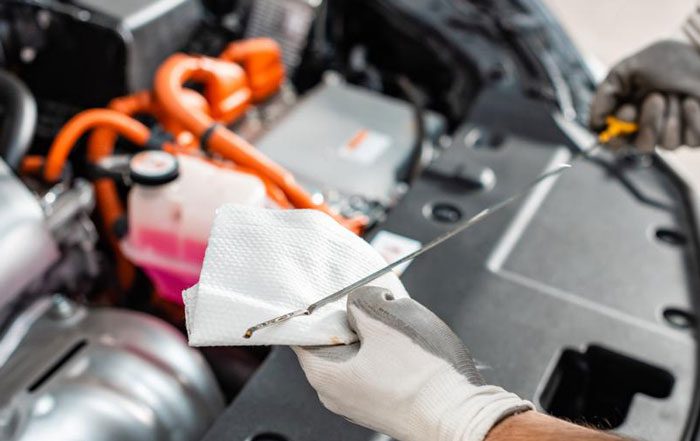
Diagnosis:
- Observe the current oil texture in your vehicle.
- If the oil is black, smelly, and contains tiny foreign particles, then the oil is contaminated.
Solution:
- Drain out the contaminated oil.
- Refill the engine with fresh oil as specified by the manufacturer’s manual
Faulty Oil Pressure Sensor
A faulty oil pressure sensor will misread oil pressure measurements. Regardless of whether you are driving or not, a faulty oil pressure sensor will cause the oil light to come on even when you are not accelerating.
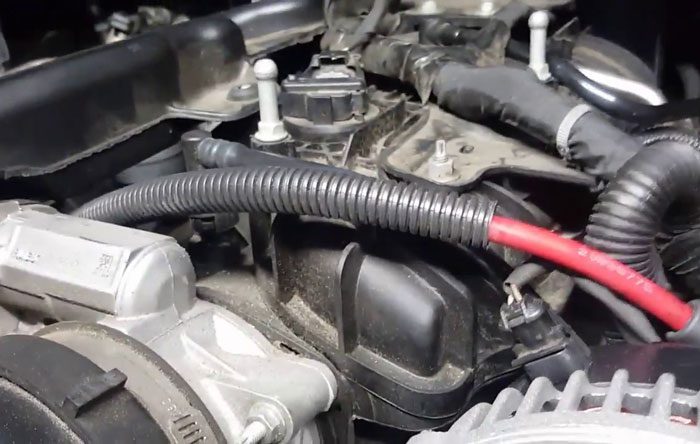
Diagnosis:
- Ensure that there are no loose wire connections that are causing the inaccurate pressure sensor readings.
- Use a multimeter to test the oil pressure sensor.
- Compare the readings with the average standard measurement numbers
- If the readings are beyond the normal range, then the pressure sensor is faulty.
Solution:
- Replace the faulty pressure sensor with a new one according to the manufacturer’s manual.
Engine Overheating
Engine overheating decreases oil viscosity and makes it thinner. This makes the oil less effective as a lubricant.
As a result, the pressure for maintaining lubrication while driving decreases, causing low oil light pressure.

Diagnosis:
- Check the temperature gauge on your dashboard.
- If it is in the red zone or is beyond the normal range, then it implies engine overheating.
- Inspect the cooling system to make sure it is functioning properly.
- Ensure there is a sufficient amount of coolant in the coolant reservoir or radiator.
Solution:
- Add appropriate coolant mixture if the coolant levels are low.
- If the cooling system, thermostat, or radiator is faulty, replace it with new ones.
Bad Oil Pump
A bad oil pump is unable to circulate enough oil to the engine, which causes the engine to overheat, and the pressure sensor detects low oil pressure. A bad oil pump can also cause an oil leak, which empties the oil in the pan much faster when driving.
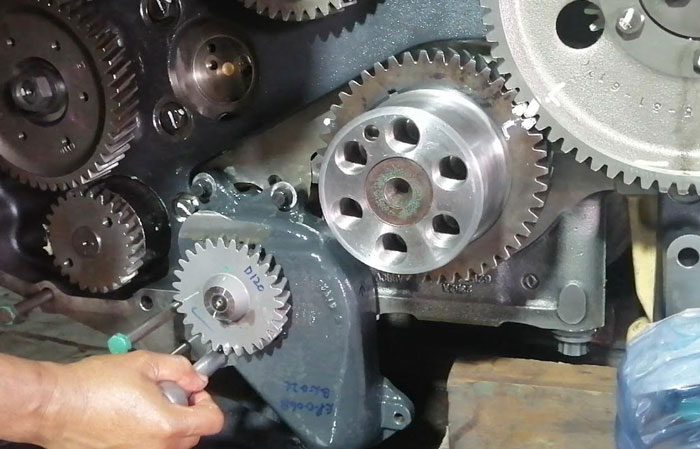
Diagnosis:
- A bad oil pump causes engine performance issues
- Notice if the engine makes an unusual knocking or tapping engine sounds
Solution:
- Replace the bad oil pump with a new oil pump
FAQs
Here are some additional queries people also ask about the oil light coming on and off while driving.
Yes, it does. As the engine speed increases while driving, the oil pump has to work harder to circulate more oil to the engine. This causes high oil pressure. Speed demands more oil lubrication. Speeding with the oil light on is even more dangerous.
You can drive on low oil as long as the oil light flash does not appear on the dashboard. In fact, older cars had no engine problems with low oil levels so long as the oil level was above the minimum level on the dipstick.
However, the moment you see the oil light appear, you should stop driving immediately. Even if it appears for a brief moment, you must not keep driving.
As a general rule of thumb, it is advisable not to drive on low oil.
The reminder light serves to remind the driver to change oil. It does not indicate any major problem. The oil pressure light is a serious indicator that calls for servicing right away.
Outro
The severity of low oil pressure ranges from as simple as low oil levels to a more sophisticated condition, such as engine overheating.
The yellow oil light is not a serious concern. It indicates an oil change. However, the red oil light implies there is a serious underlying issue.
Never keep driving the car if you see the oil light on your dashboard. Consult a mechanic as soon as possible.

